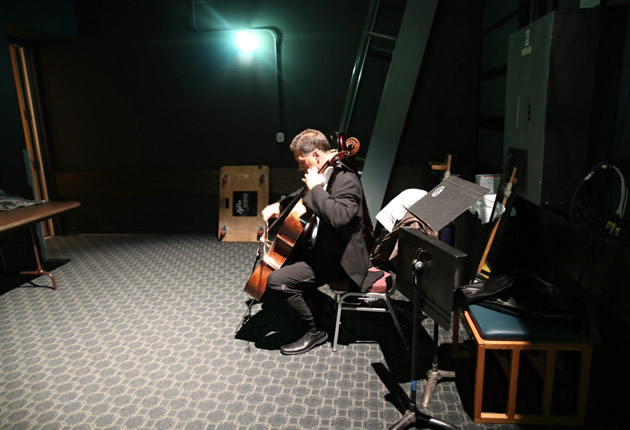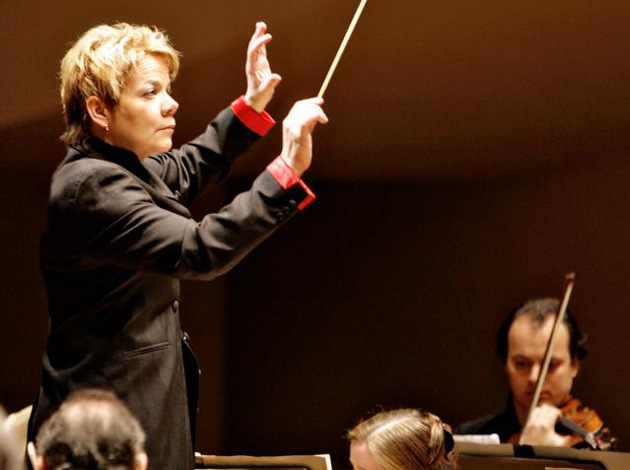
Marin Alsop, music director of the Baltimore Symphony, is the only female conductor of a major US orchestra. Photo by Grant Leighton
Earlier this month, Vasily Petrenko, the principal conductor of the Oslo Philharmonic and the Royal Liverpool Philharmonic, provoked outrage when he told a Norwegian newspaper that “orchestras react better when they have a man in front of them” because “a cute girl on the podium means that musicians think about other things.” (His words have also been translated as “sweet girl,” which isn’t really any better.)
This all went down a few days before Marin Alsop, the principal conductor of the Baltimore Symphony Orchestra, became the first woman to conduct the Last Night of the Proms, a 118-year-old London concert that marks the end of the city’s eight-week summer season of classical music.
Female conductors around Europe were quick to express their frustration with Petrenko’s statements. Sarah Alexander, chief executive of the National Youth Orchestra, where Petrenko is also a conductor, put out a statement. From the Guardian:
[She] said it was very disappointing that Petrenko should “express such a narrow view when he is chief conductor of an organization that is run by a woman, half of whose teaching staff are women, all of whose senior management team are women and 50 percent of its members are young women, for whom we actively encourage a vision as future leaders.”
She added: “It’s not an opinion I have ever heard him express before.”
Petrenko later clarified that he was referring only to orchestras in Russia, and that his wife is a choral conductor. He encouraged women to study conducting, assuring them that their success depends “on their talent and their work, definitely not their gender.”
Which got us thinking: How big is the gender gap in orchestra conducting, actually?
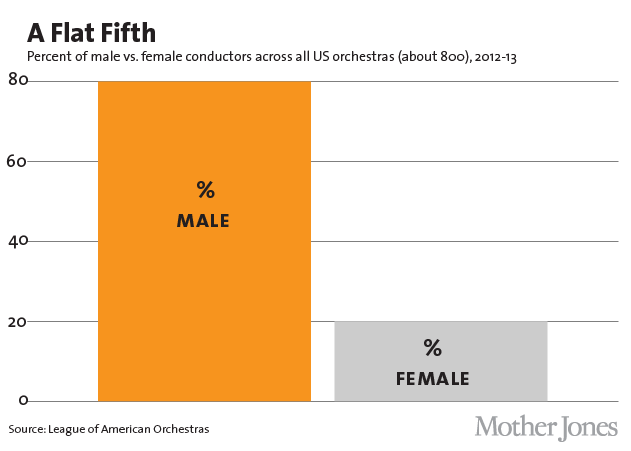
The numbers above include assistant and substitute conductors, and many of the women work for smaller-budget or youth ensembles. Now look at the gap when we hone in on larger orchestras.
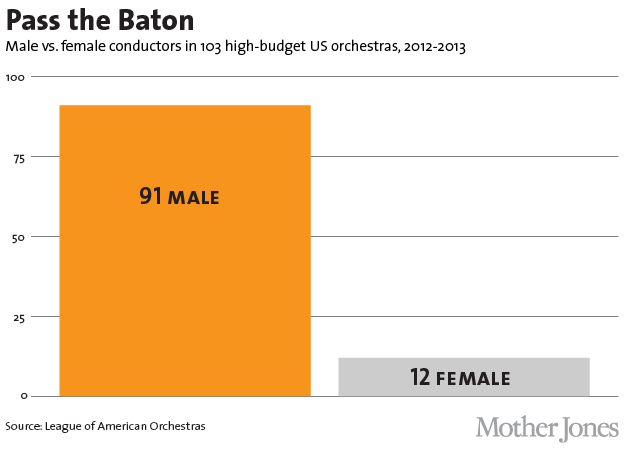
Finally, let’s look at the elite, America’s 22 highest-budget orchestras…

That lone woman is Alsop, of the Baltimore Symphony. Here she is conducting the Last Night of the Proms earlier this month:
In the wake of Petrenkos’ comments, observers have pointed out that the tradition-steeped world of classical music has made gains in gender parity. Many prestigious orchestras have significant female membership—women outnumber men in the New York Philharmonic’s violin section—and several renowned ensembles, including the National Symphony Orchestra, the Detroit Symphony, and the Minnesota Symphony, are led by women violinists. Brass, percussion, and string-bass orchestra sections are still predominantly male. And conducting is especially lopsided; it’s “one of the last glass ceilings in the music industry,” the Guardian notes. And that’s worrisome given that a good number of women are still studying it at an advanced level—although that gap widened this past year.
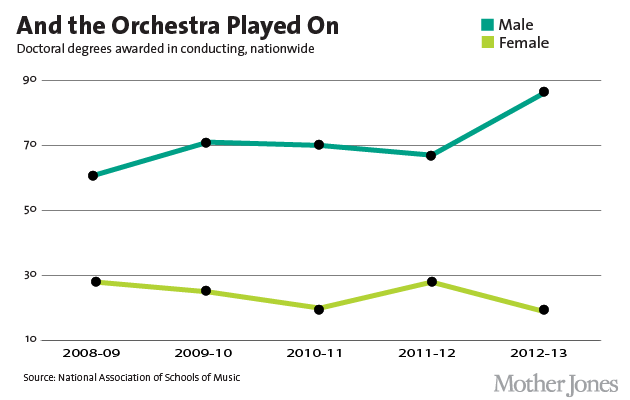
In 2009 and 2012, as you may notice, nearly half of the conducting doctorates went to women. Some people with higher degrees in conducting go into academia rather than helming an ensemble—but the gender distribution of music school professorships isn’t very equitable either.
As we’ve reported previously, a number of US orchestras have discovered that they have to bend tradition to say afloat, whether that means projecting concerts outside their venues in high-def or teaming up with mainstream pop and rock musicians. Putting women on the podium may not be traditional, but if Alsop’s Proms—which racked up a record number of sold-out shows (57 of 75) and employed an unprecedented number (five) of female conductors—is any indication, that’s an innovation that audiences appreciate.


